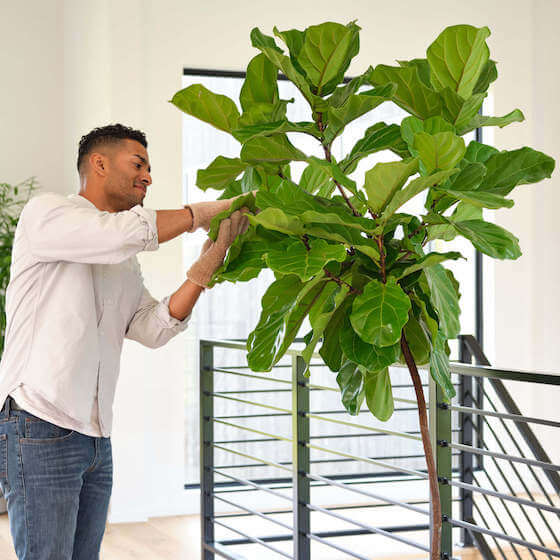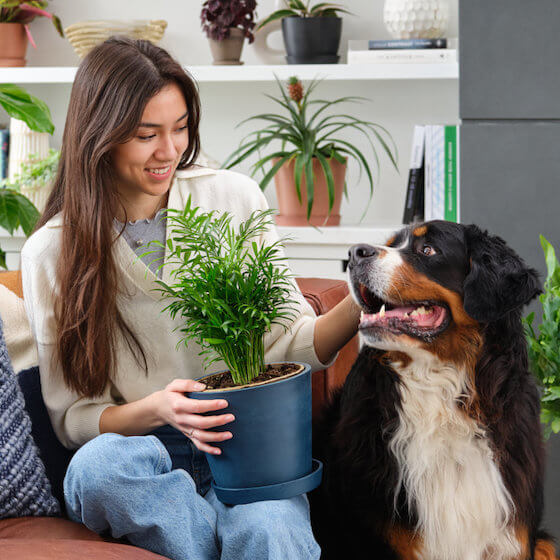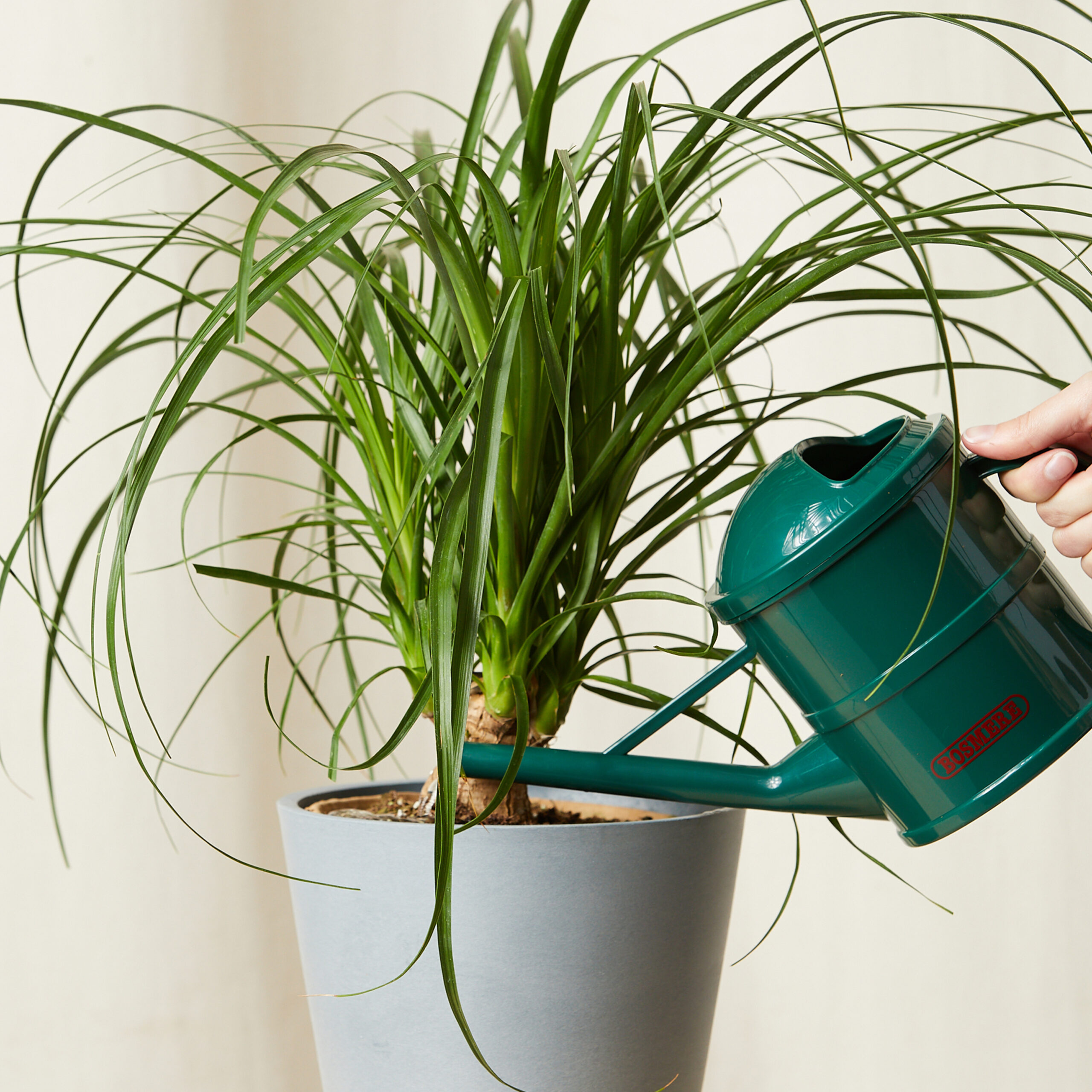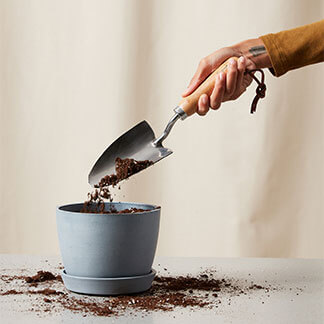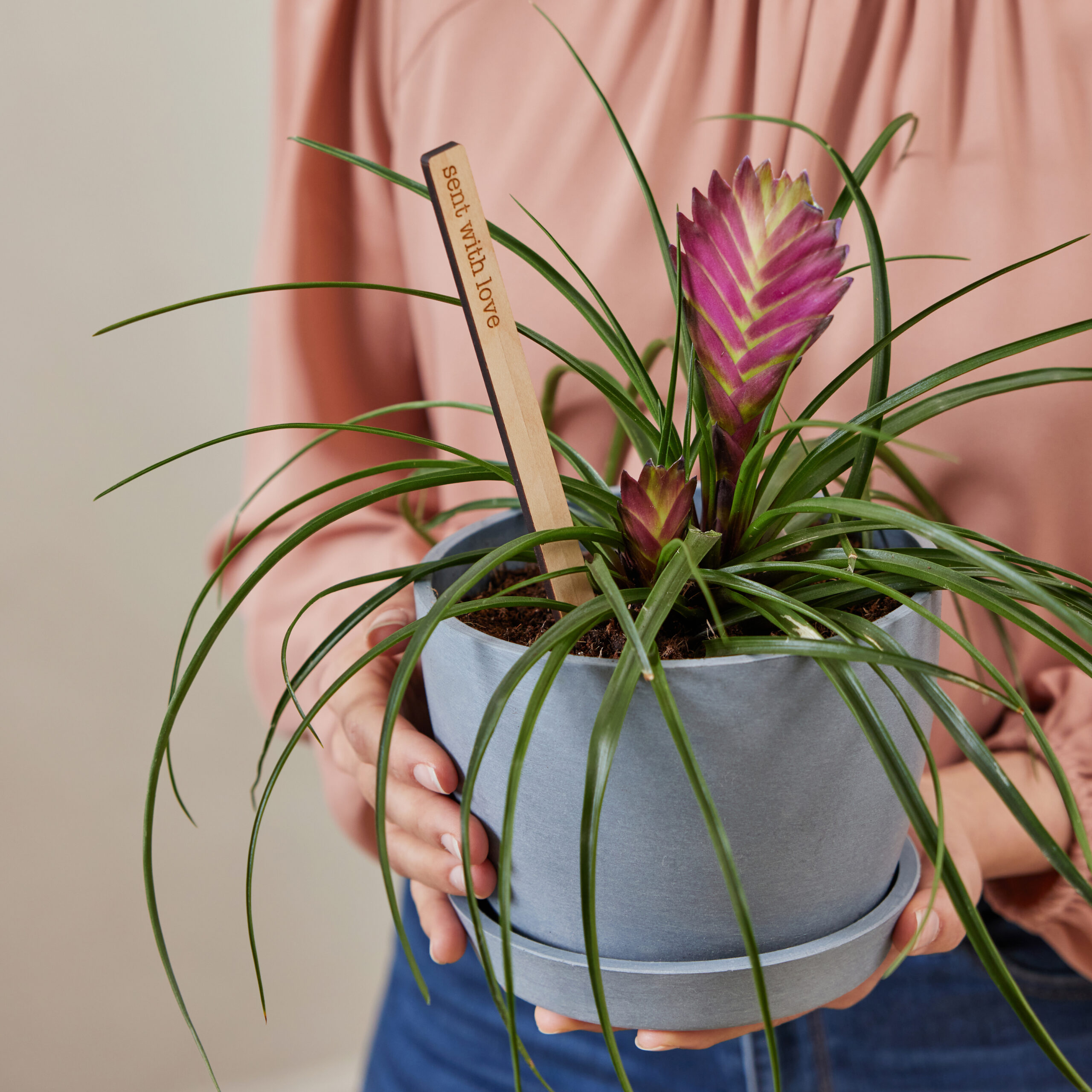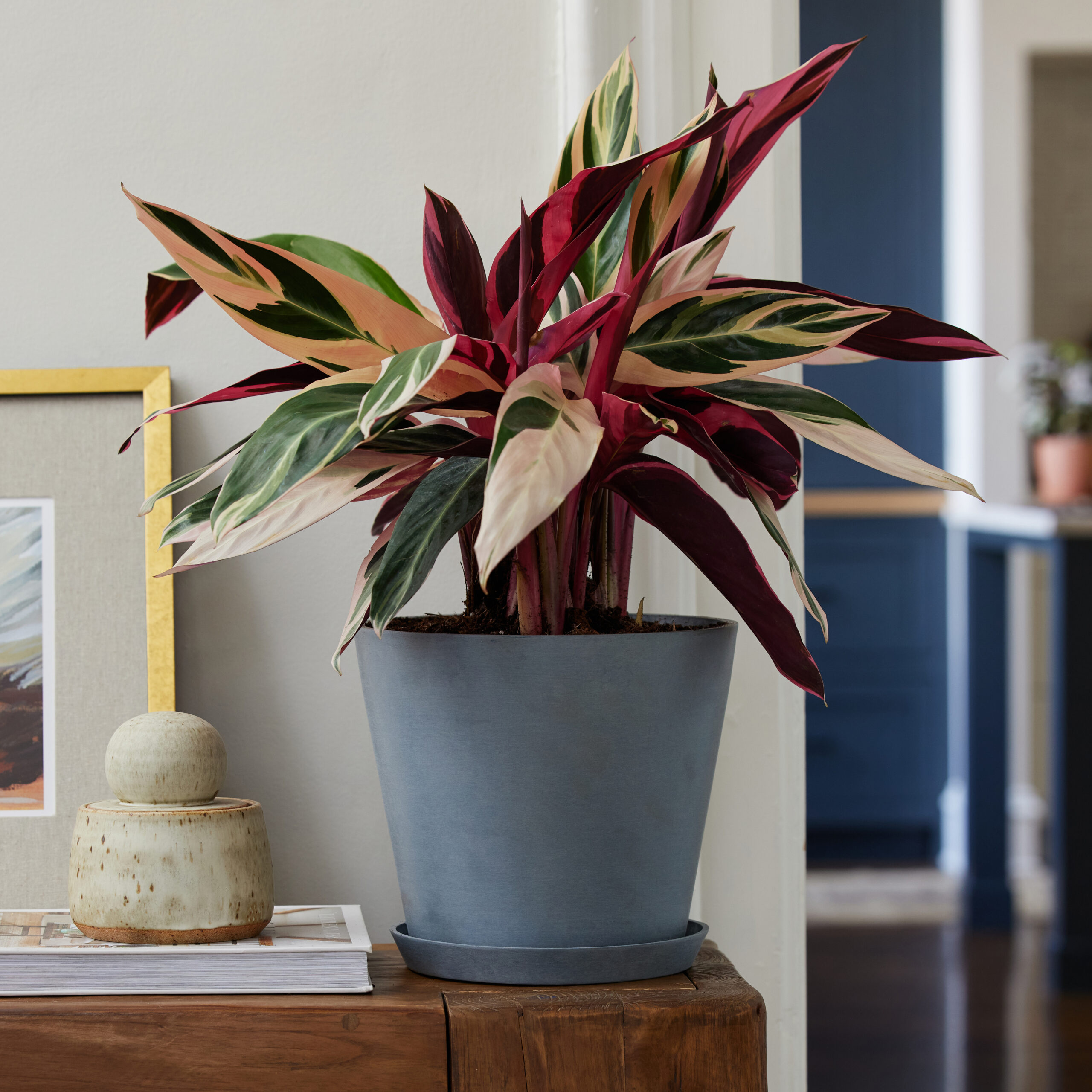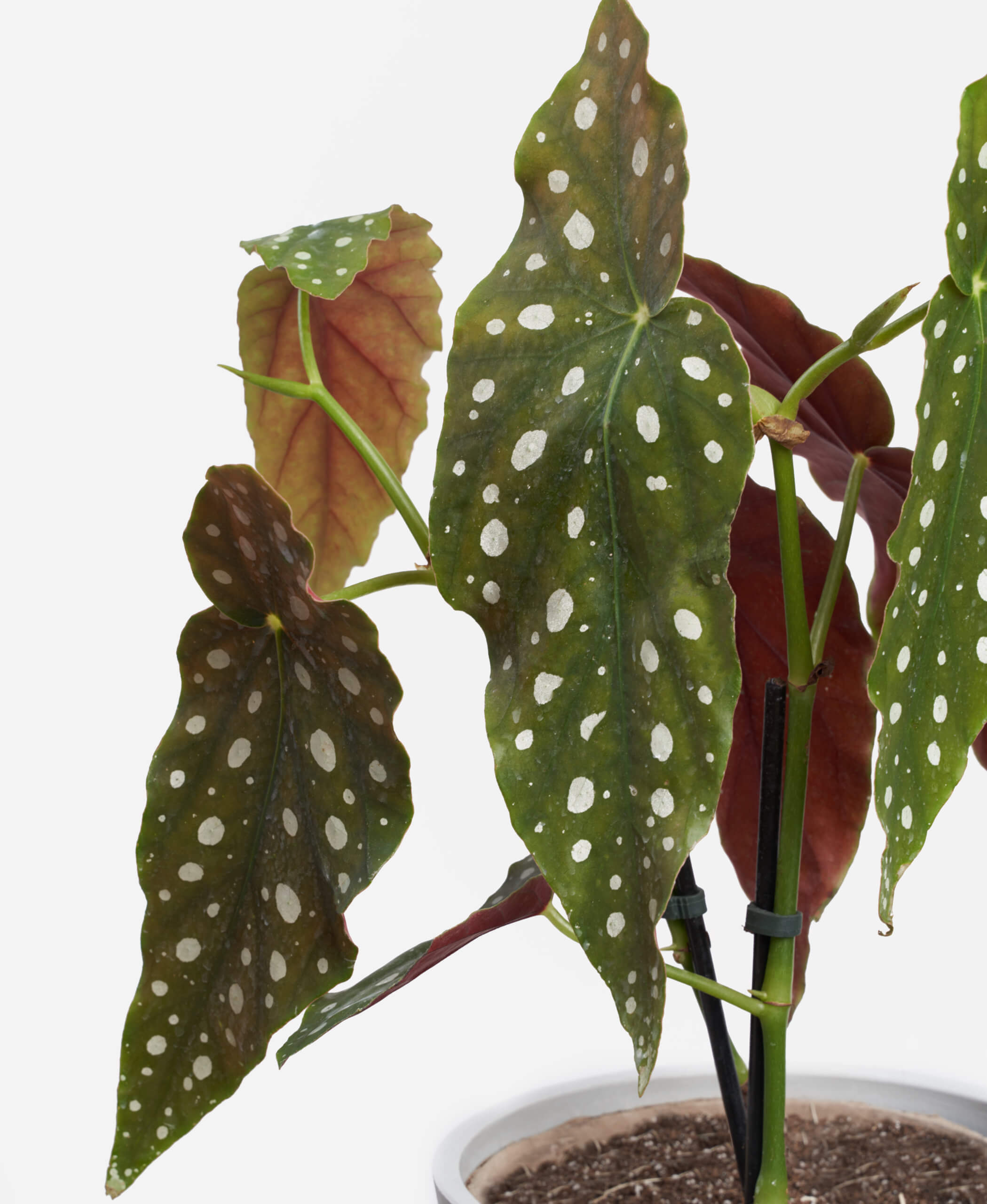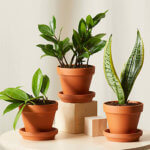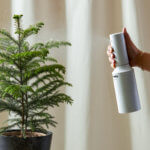Watering
The most common cause of brown leaf edges on your Begonia is that it is getting too dry between waterings. Be sure to water when the soil volume is 50-75% dry and avoid letting it dry out more than this. Always water thoroughly until you see water flow out of the drainage hole. Discard any excess water in the tray after a few minutes.
Is the soil completely dried out? Give it a good soak by bottom watering.
Here’s how to bottom-water your Begonia:
- Place your plant in your sink or tub without the saucer. Fill your basin up with about 3-4″ of water. Make sure the water isn’t hot!
- Allow your plant to soak up water through the drainage hole in the bottom of the pot for at least 45 min.
- Feel the top of the soil after your plant has been soaking–has the water reached the top 2-3” of soil?
- If not all the soil feels saturated, water your Begonia slightly from the top of the soil to help speed up the saturation.
- When your plant’s soil is evenly damp, drain the sink/tub and allow the plant to rest while it drains thoroughly. Place the plant back on its saucer and back in its proper spot.
Low humidity
Increasing humidity will help prevent dry edges on your Begonia in addition to a consistent watering routine. Try adding a pebble tray, or using a humidifier. Although we normally recommend misting your plants, your Begonia is an exception. Begonias are prone to powdery mildew that can occur if their leaves are kept wet. It is okay to mist the area around your plant, but do not mist directly on the leaves, and avoid getting the leaves wet while watering.
Sunburn
If you are keeping your begonia in a location where it is receiving harsh direct sun rays, it can lead to leaf burn and drying out. Place your Begonia in a location where it receives bright indirect light. Next to an eastern window is great, but if your window faces south or west, place it a few feet from the window.
